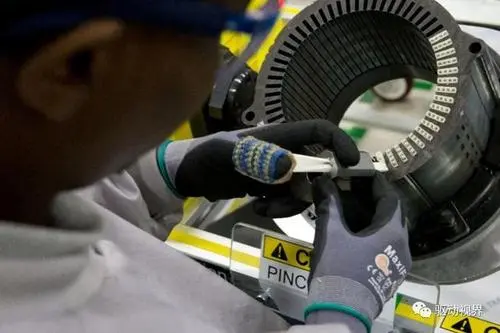The effects of shape and tolerance of magnet on the performance of the permanent magnet motor

4. The influence of residual magnetism
For DC motors, under the same winding parameters and test conditions, the higher the residual magnetism, the lower the no-load speed and the smaller the no-load current; the greater the maximum torque, the higher the efficiency of the highest efficiency point. In the actual test, the level of no-load speed and the maximum torque are generally used to judge the residual magnetism standard of the magnet.
For the same winding parameters and electrical parameters, the reason why the higher the remanence, the lower the no-load speed and the smaller the no-load current is that the motor in operation produces enough reverse inductance at a relatively low speed. The generated voltage reduces the algebraic sum of the electromotive forces applied to the windings.
5. The influence of coercive force
During the operation of the motor, there are always problems of temperature and reverse demagnetization field. From the perspective of motor design, the higher the coercive force, the smaller the thickness direction of the magnet, the smaller the coercive force, and the larger the thickness direction of the magnet. But the magnetic steel is useless after exceeding a certain coercive force, because other components of the motor cannot work stably at that temperature. If the coercive force can meet the requirements, it can be recommended to meet the requirements under the experimental conditions, and there is no need to waste resources.
Sixth, the influence of squareness
The squareness only affects the straightness of the efficiency curve of the motor performance test. Although the straightness of the motor efficiency curve has not been listed as an important indicator standard, it is very important for the continued distance of the hub motor under natural road conditions. important. Due to different road conditions, the motor cannot always work at the maximum efficiency point, which is one of the reasons why the maximum efficiency of some motors is not high and the continuation distance is longer. For a good in-wheel motor, not only the maximum efficiency should be high, but also the efficiency curve should be as horizontal as possible. The smaller the slope of the efficiency reduction, the better. As the market, technology and standards of in-wheel motors mature, this will gradually become an important standard.
7. The impact of performance consistency
Inconsistent residual magnetism: Even if there are individual ones with particularly high performance, it is not good. Due to the inconsistency of the magnetic flux in each unidirectional magnetic field section, the vibration occurs due to the asymmetry of the torque.
Inconsistent coercive force: especially if the coercive force of individual products is too low, it is easy to produce reverse demagnetization, resulting in inconsistent magnetic flux of each magnet and vibrating the motor.
This effect is more significant for brushless motors. The geometric shape and tolerance of permanent magnet motor self-learning magnets affect the width of motor magnets: for densely packed brushless motor magnets, the total cumulative gap cannot exceed 0.5mm , If it is too small, it will not be installed, and if it is too large, it will cause the vibration of the motor and reduce the efficiency, because the position of the Hall element that measures the position of the magnet does not correspond to the actual position of the magnet. In addition, the consistency of the width must be ensured, otherwise the efficiency of the motor will be low and the vibration will be large.



























 XINDA
XINDA